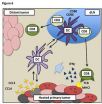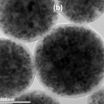(Press-News.org) According to Pierre-Marie David of the University of Montreal's Faculty of Pharmacy, stock-outs of antiretroviral (ARV) drugs in recent years in the Central African Republic have had a dramatic impact on the health of HIV-infected people. These shortages have also created mistrust among patients toward the political and medical actors responsible for the fight against HIV/AIDS. And their wariness is likely to reduce their chances of getting better. David lived in the Central African Republic from 2005 to 2008, where he worked as Access to Antiretroviral Treatment Coordinator for the Red Cross. He then conducted research on the social effects of ARVs in the context of that country. His findings were recently published in Global Public Health.
From hope to disappointment
The fight against HIV/AIDS is one of the eight "Millennium Development Goals" adopted in 2000 by the UN Member States. Under this objective, free access to ARVs has become widespread in various countries, including the Central African Republic. "In this way, around 14,000 people were able to receive treatment in 2011 in a country where prevalence of the disease was 5%, which is an epidemic generalized across the population," says David.
However, ARV distribution has created disappointment equal to the high expectations it initially raised.
On the one hand, free access to ARVs offered the possibility of living better with HIV, which as a result, became a treatable infection like others. On the other hand, carriers of the virus were less stigmatized by the population, and the availability of medications resulted in a doubling in the number of pregnant women agreeing to be tested for HIV (20,000 in 2008 vs. 40,000 in 2009). But the management of funds – US $43 million – was centralized by an unprepared state apparatus. The distribution networks that existed before free access disappeared, leaving a monopoly system that had become corrupt.
So much so that, from 2008 to 2010, the Global Fund to Fight AIDS, Tuberculosis and Malaria sporadically froze payments to ensure greater traceability. The supply of ARVs was affected, resulting in stock-outs that sometimes lasted more than two months in areas of the country with more than 220,000 HIV-infected people.
Biological and social resistance
Noting the extent of the problem when he returned to Bangui in 2010, David reframed his work to include the individual and social effects of treatment discontinuation. "Paradoxically, these shortages, in both real and symbolic terms, were a death sentence for those whom the drugs were supposed to save," he says.
On the one hand, many patients suffered virologic failure (or treatment failure) due to the strategies they used to compensate for a lack of ARVs. "For example, some people took their medications only every other day so they would have some left over in case of a shortage, while others relied on local healers in the absence of treatment," recalls David.
Such strategies likely increased the risk of drug resistance.
On the other hand, treatment interruptions were also interpreted by patients as a betrayal of those responsible for international programs. "In addition to biological resistance, I also noted social resistance, indeed a kind of cynicism," explains David. "And if, in ten years, we decide to give them second or third generation drugs to treat drug resistance, we will first have to ask how the development of new programs will be interpreted."
In other words, patients may reject these programs, and we will be deceived into believing that these men and women are refusing treatment for cultural reasons.
"However, there will be historical reasons for this social resistance, and in this sense, current stock-outs will be an explanatory factor for adherence or non-adherence to future treatment programs," he concludes.
About the situation in the Central African Republic
Since 2013, the Central African Republic has engaged in its third civil war, caused primarily by problems of governance that have degenerated into communal conflict between Christians and Muslims in a region greatly destabilized by fighting in Darfur and the Democratic Republic of Congo (DRC) and the spread of armed militias over a large part of the area.
According to the UN, the country is in the midst of a humanitarian crisis: half of the 4.6 million inhabitants of the Central African Republic are in a "state of humanitarian assistance," with 400,000 internally displaced and 68,000 refugees in neighbouring countries, mainly the DRC. In addition, approximately 1.1 million people are affected by food insecurity.
The situation deeply concerns David, not only because of the additional difficulties it raises for ARV distribution, but also because of the situation of survival it has created for the entire population. "Access to ARV treatment becomes problematic in the context of daily survival in a country that already generates little interest," he laments, recalling that less than 40% of basic humanitarian needs are currently filled. A call for international commitment.
INFORMATION:
Notes
Pierre-Marie David published "Towards the embodiment of biosocial resistance? How to account for the unexpected effects of antiretroviral scale-up in the Central African Republic" Vol. 9, Iss. 1-2, 2014 of Global Public Health. The following funding acknowledgement appeared in the article: "This research has been supported by a PhD fellowship from the Méos, a research group on medication as social object at the University of Montreal and a Young Researcher Fellowship from Sidaction, Paris, France." The University of Montreal is officially known as Université de Montréal.
Fighting against HIV in the Central African Republic -- the importance of perseverance
Drug stock-outs have made HIV patients wary
2014-03-04
ELSE PRESS RELEASES FROM THIS DATE:
New therapy helps to improve audio and visual perception in stroke patients
2014-03-04
A stroke can cause permanent damage to important parts of the brain, with the result that many stroke survivors require lifelong care and support. 'It is not uncommon for stroke patients to suffer from an awareness deficit or a reduced response to stimuli on one side of their body. This condition, known as hemispatial neglect, can mean that patients are unable to properly perceive people, images or sounds on that side,' explains Professor Georg Kerkhoff from the Department of Clinical Neuropsychology at Saarland University. 'These phenomena tend to be observed when the ...
Outbursts of anger linked to greater risk of heart attacks and strokes
2014-03-04
Outbursts of anger may trigger heart attacks, strokes and other cardiovascular problems in the two hours immediately afterwards, according to the first study to systematically evaluate previous research into the link between the extreme emotion and all cardiovascular outcomes.
The study – a systematic review and meta-analysis – published online today (Tuesday) in the European Heart Journal [1], found that in the two hours immediately after an angry outburst, a person's risk of a heart attack (myocardial infarction (MI) or acute coronary syndrome (ACS)) increased nearly ...
Dartmouth researchers find promising results with local hyperthermia of tumors
2014-03-04
A combination of iron-oxide nanoparticles and an alternating magnetic field, which together generate heat, have activated an immune system response to tumors in mice according to an accepted manuscript by Dartmouth-Hitchcock Norris Cotton Center researchers in the journal Nanomedicine: Nanotechnology, Biology and Medicine released online on February 24, 2014.
"The study demonstrates that controlled heating of one tumor can stimulate an immune response that attacks another tumor that has not had the heat treatment," said Steve Fiering, PhD, Norris Cotton Cancer Center ...
Plant extract hope for infant muscle disease
2014-03-04
Their study is published today (3rd March 2014) in the Journal of Clinical Investigation.
The research team have found that a plant pigment called quercetin – present in some fruits, vegetables, herbs and grains – could help to prevent damage to the nerves associated with the childhood form of motor neurone disease, spinal muscular atrophy (SMA).
SMA, also known as 'floppy baby syndrome', is a leading genetic cause of death in children. It affects approximately one in 6,000 to 10,000 children and around half of children with the most severe form will die before the ...
Researchers develop antibody-targeted treatment for recurrent small-cell lung cancer
2014-03-04
Researchers at Norris Cotton Cancer Center have found an antibody that may be used in future treatments for recurrent small-cell lung cancer, which currently has no effective therapy. The mouse monoclonal antibody they have developed, MAG-1, targets the ProAVP surface marker. When given alone, it significantly slows the growth of tumor xenografts of human recurrent small-cell lung cancer in mice. The study, "Growth Impairment of Small-Cell Cancer by Targeting Pro-Vasopressin with MAG-1 Antibody," was recently published online in Frontiers in Oncology.
"We are developing ...
JCI online ahead of print table of contents for March 3, 2014
2014-03-04
Identification of factors that influence breast cancer metastasis to bone
One of the more serious and frequent complications of advanced breast cancer is bone metastasis, which is exacerbated by TGF-β signaling; however, it is not clear how TGF-β production is regulated prior to and during metastasis. In this issue of the Journal of Clinical Investigation, Guohong Hu and colleagues at the Shanghai Institutes for Biological Sciences evaluated murine models of invasive breast cancer and determined that cancer cells lacking the putative tumor suppressor DLC1 have ...
Youngest kindergarteners most likely to be held back, MU study finds
2014-03-04
COLUMBIA, Mo. -- For some parents, the decision of when to enroll their children into kindergarten can result in costly consequences such as another year of daycare expenses. In general, children must be five years old to be eligible to be enrolled in kindergarten. However, the developmental differences between a young kindergartener who barely qualifies for the state-mandated age cutoff date compared to a child who is almost year older, may have implications. Now, a University of Missouri researcher has found that the youngest kindergartners are about five times more likely ...
UC research tests which nano system works best in killing cancer cells
2014-03-04
In current research related to improving cancer treatments, one promising area of research is the effort to find ways to selectively pinpoint and target cancer cells while minimizing effects on healthy cells.
In that effort, it's already been found in lab experiments that iron-oxide nanoparticles, when heated and then applied specifically to cancer cells, can kill those cells because cancer cells are particularly susceptible to changes in temperature. Increasing the temperature of cancer cells to over 43 degrees Celsius (about 109 degrees Fahrenheit) for a sufficient ...
The chemistry (and fascinating history) of pepper, the spice that changed the world
2014-03-04
WASHINGTON, March 3, 2014 — Pepper is one of the most plentiful condiments in the world today, but it used to be more valuable than gold. In the American Chemical Society's (ACS') latest Reactions video, we examine how pepper's delectable chemistry made it a key player in the global spice trade. The sought-after spice helped usher in the "Age of Discovery," which bridged the gap between the Middle Ages and the Modern era. And because we're celebrating our second month of existence, it's a Reactions double feature this week. In our second video, we examine the science behind ...
Team models photosynthesis and finds room for improvement
2014-03-04
CHAMPAIGN, Ill. — Teaching crop plants to concentrate carbon dioxide in their leaves could increase photosynthetic efficiency by 60 percent and yields by as much as 40 percent, researchers report in a new study.
The team used a computer model to simulate how adding genes from a type of photosynthetic algae known as cyanobacteria might influence photosynthetic efficiency in plants. Cyanobacteria contain small structures, called carboxysomes, which concentrate carbon dioxide at the site of photosynthesis.
"Photosynthesis is the most studied of all plant processes, so ...
LAST 30 PRESS RELEASES:
Penn researchers awarded $25M to conduct trial using smartphones to fight heart disease
PCORI awards funding for new patient-centered healthcare research
Exploring the origins of the universe: 145 low-noise amplifiers complete ALMA telescopes
Empress cicada wings help illuminate molecular structure
Using sound waves to detect helium
Time burden in patients with metastatic breast and ovarian cancer from clinic and home demands
Researchers discover bias in AI models that analyze pathology samples
Scientists ID potential way to prevent brain injuries from triggering Alzheimer's
MASTER 2nd Open Call: Execution period kick-off
Algae for health in food and pharma
Advanced microrobots driven by acoustic and magnetic fields for biomedical applications
Chicago health information leader recognized for raising CPR readiness and blood pressure awareness
The Intimate Animal, a new book from Kinsey Institute Executive Director Dr. Justin Garcia
When blue-collar workers lose union protection, they try self-employment
New video dataset to advance AI for health care
MEA-based graph deviation network for early autism syndrome signatures in human forebrain organoids
New modeling approach sheds light on rare gut disease
Study documents potentially hazardous flame retardants in firefighter gear
Can certain bacteria regulate aging of the immune system and its related alterations?
AI model helps diagnose often undetected heart disease from simple EKG
There are fewer online trolls than people think
Cell membrane fluctuations produce electricity
Jeonbuk National University study shows positive parenting can protect adolescents against self-harm
Surface-engineered ZnO nanocrystals to tackle perfluoroalkyl substance contamination
This new understanding of T cell receptors may improve cancer immunotherapies
A new fossil face sheds light on early migrations of ancient human ancestor
A new immunotherapy approach could work for many types of cancer
A new way to diagnose deadly lung infections and save lives
40 percent of MRI signals do not correspond to actual brain activity
How brain-inspired algorithms could drive down AI energy costs
[Press-News.org] Fighting against HIV in the Central African Republic -- the importance of perseveranceDrug stock-outs have made HIV patients wary




